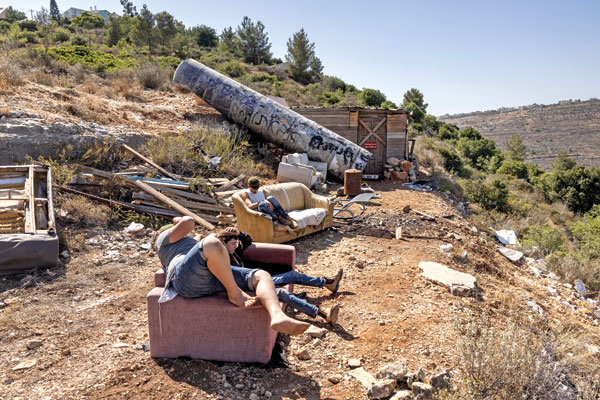Sunday Times 2
After ceasefire, Iran is preparing for the long war with Israel
View(s):- In line with its long-standing approach of strategic patience, Iran is not stepping back but rearming and regrouping for a drawn-out confrontation
By Mohammad Eslami and Ibrahim al-Marashi
An uneasy US-brokered ceasefire between Israel and Iran has ended a 12-day exchange of strikes, with Israeli Prime Minister Benjamin Netanyahu declaring victory. It marked one of the shortest wars of the 21st century.
Yet Iran, too, has claimed victory, much like it did at the end of the Iran-Iraq War from 1980 to 1988, the longest conventional war of the 20th century, when then-Iraqi President Saddam Hussein also declared victory.
In both cases, Iran was the target of attack and framed the conflicts as “imposed wars” (jang-e tahmili), arguing that they were launched with a “green light” from the United States.
Also in both cases, Iran paired its declaration of victory with a posture of strategic patience (sabr-e rahbordi)—a doctrine of restraint aimed at shifting the balance over time. After the Iran-Iraq War, it waited, letting time and circumstance play to its advantage. It was ultimately the US, not Iran, which dismantled Saddam’s weapons of mass destruction during the 1991 Gulf War and later overthrew him entirely in 2003.
From Tehran’s perspective, the same strategic patience principle is being applied again today.
The current ceasefire, while publicly welcomed, is widely seen—especially in Iran’s political and military circles—as a tactical pause rather than a sustainable peace.

Israeli settlers sit next to remains of an Iranian missile that fell at the settlement of Neria in the occupied West Bank. Pic by Menahem Kahana/AFP)
Strategic pause
For Iran, the ceasefire with Israel serves a clear strategic purpose.
In line with its long-standing approach of strategic patience, time is a resource. Iran will recalibrate its nuclear strategy, expand regional alliances, and test the limits of international resolve.
During this period, Iranian planners are expected to re-examine their deterrence doctrines, potentially including asymmetric naval capabilities and cyber operations, while crafting a long-term retaliatory posture.
Time provides Tehran with critical breathing room to: first, restructure its leadership; second, replenish its arms; and third, plan an international diplomatic offensive.
In June 1981, the Islamic Republican Party was bombed, killing its secretary-general, Mohammad Beheshti and 74 high-ranking officials. That same month, Iran lost one of its most influential military commanders, Mostafa Chamran, on the front lines with Iraq.
In August 1981, Iran’s newly elected president, Mohammad-Ali Rajai and Prime Minister Mohammad-Javad Bahonar were assassinated in a bombing at the prime minister’s office in Tehran.
The attack was carried out by the Mujahideen-e Khalq (MEK). This armed opposition group had turned against the Islamic Republic and allied itself with Saddam’s regime during the Iran-Iraq War.
The bomb was planted by Masoud Keshmiri, an MEK operative who had infiltrated the government posing as a security official. The explosion killed eight high-ranking officials, including the president, prime minister, the chief of national police, senior military advisers, and members of the Supreme National Security Council, making it one of the deadliest acts of internal sabotage in the early years of the war.
Nevertheless, despite the loss, Iran was still able to launch a counter-attack that expelled all Iraqi forces from Iranian soil.
Rebuilding and rearming
On the morning of Friday, June 13, 2025, Israel launched its most extensive military operation against Iran to date.
Its strikes went far beyond nuclear and missile facilities, targeting senior military commanders and scientists. Among those assassinated were Major General Mohammad Bagheri, Iranian Revolutionary Guard Corps commander Hossein Salami, and aerospace chief Amir Ali Hajizadeh, along with several nuclear scientists and military officials.
Yet Iran was still able to mount missile attacks against Israel, overwhelming its vaunted anti-missile defence system.
Iran can now shift its focus towards rebuilding and rearming.
The war depleted Iran’s short- and medium-range missile stockpiles and damaged its missile-launching infrastructure, much of which was targeted in the initial waves of Israeli and US strikes.
In this new phase of calm, Iran is expected to prioritise the replenishment and modernisation of its missile arsenal, including newer classes such as the Fattah and Kheibar Shekan hypersonic missiles, while bolstering its air defences to anticipate any future surprise attacks.
One of the most critical lessons Iran has drawn from this recent war is that victory in a modern conflict is not achievable without a capable and advanced air force.
While Iran’s reliance on missile and drone-based deterrence showcased some tactical strengths, it also exposed a critical vulnerability: such systems alone are fragile when confronted with advanced aerial and electronic warfare capabilities.
To address this strategic gap, Iran is now expected to urgently pursue the acquisition of Russia’s S-400 air defence systems and Su-35 fighter jets.
Simultaneously, Chinese combat aircraft, such as the J-10 and the fifth-generation J-20, which demonstrated their capabilities in the recent India-Pakistan standoff, are being seriously considered.
Beyond these platforms, Iranian military planners have acknowledged another significant deficiency: the lack of airborne early warning systems.
Even the most advanced ground-based air defence becomes severely limited without Airborne Warning and Control Systems (Awacs), which are essential for real-time detection and coordination. Thus, the acquisition of Awacs aircraft from China or Russia has become an urgent priority in Tehran’s defence modernisation agenda.
Beyond the battlefield
Iran is also laying the groundwork for a legal and diplomatic counteroffensive.
Iranian officials have already announced their intention to submit a comprehensive complaint to the International Court of Justice, holding both Israel and the US responsible for initiating an undeclared war and violating Iranian sovereignty by targeting nuclear facilities protected under international law.
Until this legal process reaches a stage of formal recognition and judgment, Tehran has made it clear that it will not return to the nuclear negotiation table.
This pivot away from negotiations is not a sign of retreat, but a calculated manoeuvre. Meanwhile, another crucial variable remains hidden from international view: Iran’s president has signed a law suspending cooperation with the International Atomic Energy Agency under Director-General Rafael Grossi, citing biased oversight and political pressure.
Prior to the war, and unbeknownst to most intelligence services, Tehran had reportedly transferred large quantities of enriched uranium from Fordow and Natanz to undisclosed secure locations.
These reserves remain untouched by US and Israeli strikes, as no radiation was reported in Iran, indicating the stockpile was most likely undamaged. Iran could also choose not to disclose the whereabouts of these uranium stockpiles, using them as a strategic deterrence lever in future confrontations or negotiations.
In light of all these factors, the current ceasefire is not a resolution; it is a chapter in a much larger, unfinished story.
Iran’s actions, both during and after the war, underscore a coherent and disciplined doctrine: absorb the blow, retaliate with calibrated precision, and use time as a tool of power. Strategic patience, for Tehran, is not passive restraint; it is a form of long-term psychological and political warfare.
Whether the ceasefire holds or shatters under the weight of unresolved tensions will depend not just on missiles or negotiations, but on which side better understands the value of time.
Mohammad Eslami is an Assistant Professor of International Relations at the University of Minho, a visiting fellow of International Security at Dublin City University, Ireland, and a Max Weber Fellow of International Security at European University Institute, Florence, Italy. He was also a fellow of Arms Control Negotiation Academy led by Davis Center for Russian and Eurasian Studies of Harvard University. His research primarily focuses on the proliferation of conventional and unconventional weapons in the Middle East region.
Ibrahim al-Marashi is associate professor of Middle East history at California State University San Marcos. His publications include Iraq’s Armed Forces: An Analytical History (2008), The Modern History of Iraq (2017), and A Concise History of the Middle East (forthcoming).
Courtesy Middle East Eye

